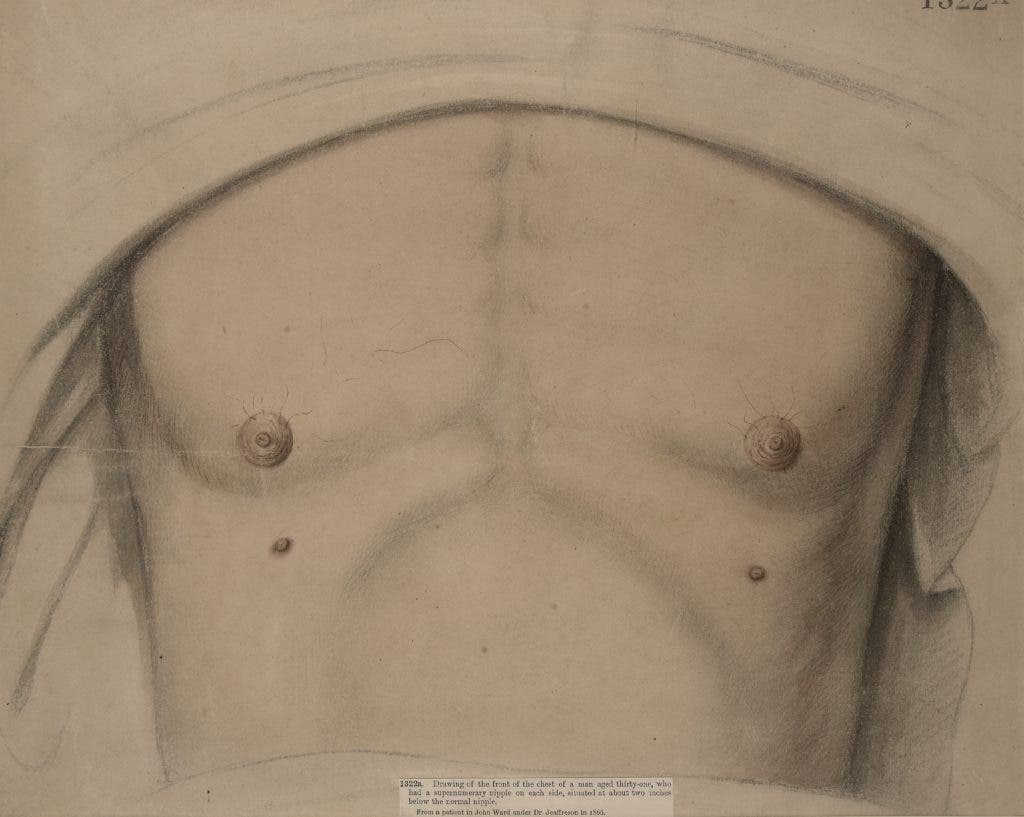If you feel silly for wondering why men have nipples you can feel a bit better knowing that Darwin asked himself the same question. What is the point of having nipples if men can’t breastfeed?
Darwin’s idea was that both men and women used to be able to breastfeed their children. Then men who breastfed passed some disadvantage on to their offspring, such as being able to raise fewer of them than women, and the ability was inactivated over time due to disuse. However, the answer to this question actually lies in human development rather than evolution.

As the embryo starts to grow within the mother’s womb, it is a generic human being. If it continues to grow undisturbed it will be born as a female. At week 4 of development, milk lines develop; they are stripes of tissue that extend from the armpits to the thighs and later regress to form two nipples. Sometimes, extra nipples can be left along this pathway (that’s how Mark Wahlberg got a 3rd nipple).
However, if a Y chromosome is present, the embryo will sexually differentiate to become male by producing factors which block the development of female structures. Sexual differences appear in week 7, with the gonads differentiating into a testis or ovary. So nipples are present before the sex of an embryo is fixed.

Nipples in men do not pose a disadvantage so they are not evolutionarily selected against, as Darwin thought, so men continue to have nipples. It is difficult to lose an organ if it is not harmful, even if it is no longer useful. For example, humans still have tailbones and appendixes although neither is useful anymore.
Men having nipples may cause you to wonder:
Can men breastfeed?
If you’ve tried this at home, you’ll know that the answer is no. However, there is a rare condition called galactorrhea where affected men can lactate. This condition is often brought on by a testosterone deficiency or imbalance. Alcoholism, severe starvation, or other liver stress can cause male lactation because the liver usually controls the release of prolactin, which is a hormone that regulates milk production.
Can men get breast cancer?
It is rare but some men do get breast cancer. Only about 0.001% of men get it. Men have a small amount of breast tissue, an amount that is similar to a girl before puberty and is still vulnerable to cancer-causing mutations.
Do other male mammals have nipples?
Most other mammals have nipples; the word mammal even comes from the Latin “mamma” which means teat. However, there are exceptions. Monotreme (egg-laying mammals) males, such as platypuses, do not have nipples but then again neither do the females; they excrete milk through modified sweat glands. Other exceptions are male horses and some male rodents, which do not have nipples either.
On the other end of the spectrum, two species of bats, dayak fruit bats and masked flying foxes, have milk-producing males — although it is not known what role, if any, that they have feeding offspring. Some male goats have also been found to produce milk. Theoretically, lactating males should evolve in animals with one monogamous partner, unreliable food sources, and when both parents care for the offspring.


